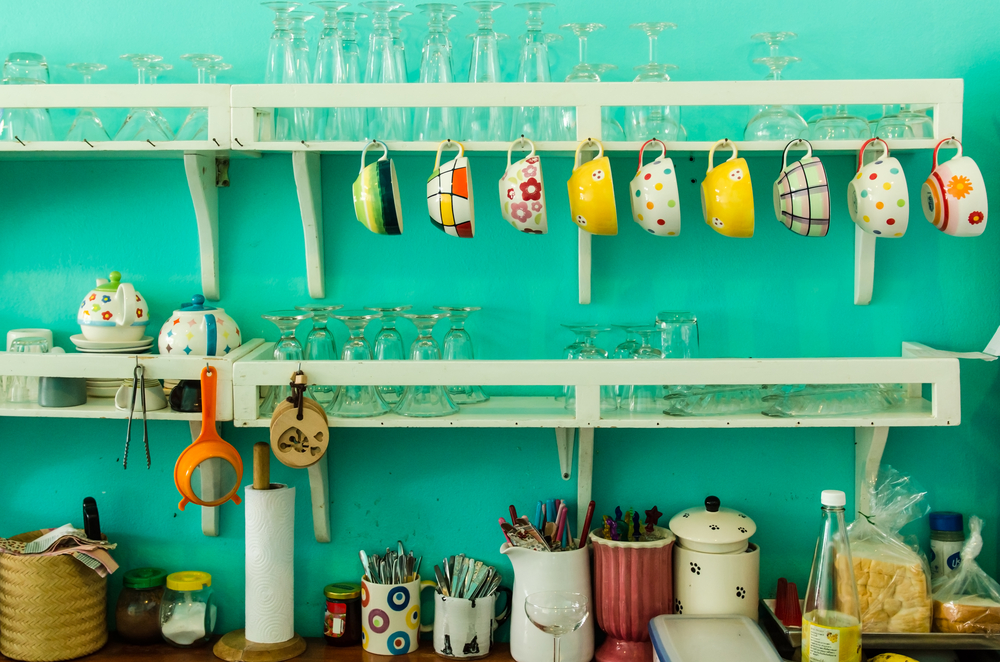Advertisement feature

It often happens that when arranging the kitchen, we did not make sure that the lighting was good. This means that you cannot see well when cooking. Therefore, the kitchen should be well lit. This will avoid accidents, e.g. when cutting meat or vegetables, and will also make the kitchen look very nice. Below you will find several ways to illuminate the kitchen.
We are very lucky when our kitchen has a lot of windows that provide us with huge amounts of sunlight. However, this is not the rule. If our kitchen has no window, then its light works practically for the day. In such cases, it is worth taking care of the kitchen lighting, which is adapted for longer work and does not wear out too quickly. It’s best to use several different light sources. Main lighting for the entire room and directional lighting illuminating a specific space. The use of mixed lighting will allow the optimal lighting of the space that we currently need. Such light in the kitchen will also allow us to avoid having to illuminate the entire interior every time. A soft light will be useful to us at night or in the morning. Thanks to it, we will not stimulate the rest of the household. However, during the preparation of lunch or dinner, we can turn on all the lights, both the main and illuminating worktops, or the kitchenette.
Traditional lighting
The traditional way of lighting the kitchen is a lamp placed in a central point in the ceiling, thanks to which we obtain an even distribution of light throughout the room. However, this type of lighting has minuses, namely, it consumes a lot of energy and therefore is quite expensive. In addition, kitchen furniture is usually placed against the walls, so when preparing meals at the worktop we will have light behind us. This can cause accidents due to poor lighting in the workplace. Central lighting in the kitchen is not very effective, it adversely affects the eyesight. In many nooks, such as e.g. under hanging cabinets, shadows are created that make work difficult. Therefore, in addition to general lighting, an additional light source should be provided in the kitchen.
The reflected light is one way of lighting the general kitchen. It uses the effect of light reflection. This type of lighting is based on the fact that the light beam is directed upwards to the ceiling and not directly downwards to the illuminated surfaces. Then the light is scattered into the room. This guarantees shadowless and soft lighting.
When planning the arrangement of lights in the kitchen, you can think of kitchen floor lights. This will add an excellent effect and fulfill the role of small lights, which can be turned on when we just want to pour a glass of water at night, while not waking up the household.
In the kitchen, a worktop is a special place that requires additional lighting. The tabletop should be illuminated with evenly spaced fittings directed directly at its surface. There are several possible ways to illuminate the worktop. The first way is available if there are hanging cabinets above the top. You can then mount small halogen lamps under low cabinets. Another option for lighting the kitchen worktop is to use halogen systems stretched over or mounted above the upper cabinets.
Don’t eat in the dark
For lighting the kitchen table, the lamp hanging centrally above the table is most often used. It is best to use a lamp with a lampshade so that the light does not blind the people sitting at the table. In small kitchens, just hang the sconce above the table. If the kitchen has a kitchen island, a good solution is to lower the ceiling above the table and illuminate it with halogen inlets. You don’t have to restrict yourself to solid oak tables, you can be creative with your use of furniture to reflect extra light, or consider glass.
Decorative lighting
The lighting above kitchen cabinets plays a decorative role and is used to illuminate the interior of cabinets after they are opened. Halogen lamps are used for such lighting, which is mounted on special brackets or plates placed above the cabinets. These lamps are installed in the middle of the cabinet width.
This is an additional type of lighting that is optional, but it gives the kitchen a vibe. Under-cabinet lighting can act as decorative lighting. If we have glass cabinets in the kitchen, we can also highlight their contents. You can use bulbs or LED strips that consume much less energy than traditional ones and have excellent decorative qualities.
Remember that apart from the fact that the light in the kitchen looks good, it also fulfills the task of lighting places. Therefore, when arranging the kitchen, make sure that all places are well lit. Meanwhile, get to work and design a beautiful and practical kitchen.
